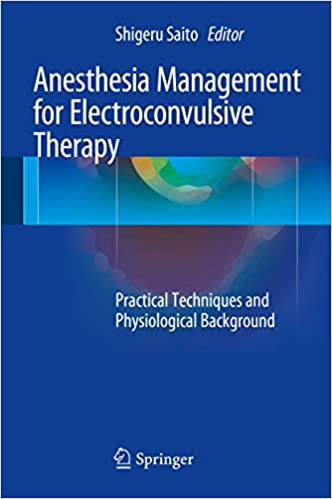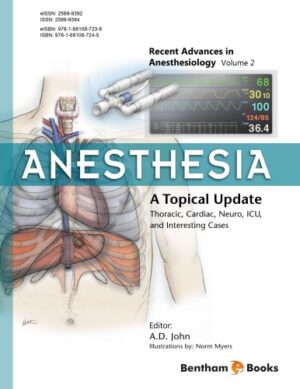Description
“Anesthesia Management for Electroconvulsive Therapy: Practical Techniques and Physiological Background” is a specialized resource that focuses on the anesthesia aspects of electroconvulsive therapy (ECT), a medical procedure used in the treatment of certain mental health conditions, particularly severe depression. This guide is designed to provide insights into the unique considerations and techniques involved in administering anesthesia during ECT. Here’s an overview of what you can expect from this resource:
- Electroconvulsive Therapy (ECT):
- The book covers the fundamentals of ECT, explaining the procedure’s purpose, indications, and its role in mental health treatment.
- Anesthesia Techniques:
- It provides detailed information on the specific anesthesia techniques used in ECT, including the choice of anesthetic agents, muscle relaxants, and monitoring methods.
- Seizure Induction:
- ECT requires the induction of controlled seizures. The resource discusses the role of anesthesia in facilitating this process while ensuring patient safety.
- Physiological Considerations:
- The book delves into the physiological changes and responses that occur during ECT, helping anesthesia providers understand the impact of the procedure on the body.
- Patient Selection:
- Patient selection and evaluation for ECT are important aspects of anesthesia management. The guide may cover the criteria for ECT and the assessment of patients before the procedure.
- Monitoring and Safety:
- Continuous monitoring is crucial during ECT to ensure the patient’s well-being and manage any potential adverse events.
- Muscle Relaxation:
- Achieving adequate muscle relaxation is essential for the safety and success of ECT, and the resource may discuss techniques for achieving this goal.
- Anesthetic Complications:
- Anesthesia providers are trained to manage complications that can arise during ECT, such as cardiovascular events or respiratory issues.
- Emergencies and Resuscitation:
- The book is likely to provide guidance on managing emergencies and resuscitation techniques specific to ECT anesthesia.
- Multidisciplinary Collaboration:
- Collaboration with psychiatrists, mental health professionals, and ECT teams is emphasized to ensure coordinated care.
- Informed Consent:
- Patients receiving ECT typically provide informed consent, and the guide may cover the communication and consent process, including discussion of potential risks.
- Patient Experience:
- Addressing patient comfort and experience during ECT is important, as it can be a source of anxiety for some individuals.
“Anesthesia Management for Electroconvulsive Therapy: Practical Techniques and Physiological Background” is an important resource for anesthesia providers, psychiatrists, and healthcare professionals involved in ECT procedures. It offers specialized knowledge and strategies for optimizing patient care during ECT, with an emphasis on safety and patient comfort. Understanding the physiological background of ECT and its anesthesia management is crucial for providing effective mental health treatment while ensuring patient well-being.





Reviews
There are no reviews yet.